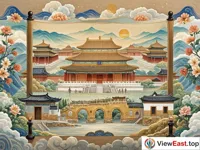
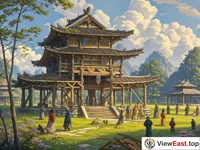
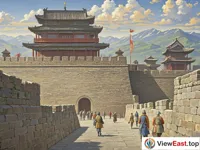
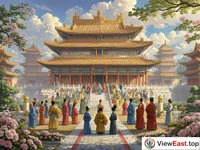


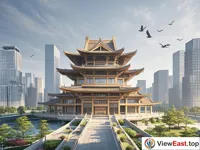
The architectural art of the Han Chinese is like an exquisitely detailed tapestry, showcasing the wisdom and aesthetics of the Chinese nation. From the Forbidden City in the north to the water towns of the south, from the cave dwellings on the Loess Plateau to the stilted buildings in the southwest, the architectural art of the Han Chinese has become a treasure in the cultural vault of China with its unique style and craftsmanship.
A Long History of Architectural Tradition
The history of Han Chinese architectural art dates back thousands of years. From the wooden structures of the Shang and Zhou dynasties to the brick and stone city walls of the Qin and Han dynasties, and further to the palaces of the Tang and Song dynasties and the gardens of the Ming and Qing dynasties, Han Chinese architectural art has evolved over the long river of history, forming its own unique system.
Diverse Architectural Styles
The architectural styles of the Han Chinese are diverse, with the grandeur and magnificence of the north and the exquisite elegance of the south. Northern architecture often uses symmetrical layouts to emphasize the majesty of the central axis, while southern architecture pays more attention to harmony with nature, with deep courtyards and small bridges over flowing water.
Exquisite Architectural Skills
The skills of Han Chinese architecture are exquisite, especially in timber construction. Unique architectural elements such as dougong (bracket sets), mortise and tenon joints, and upturned eaves demonstrate the superb craftsmanship of Han Chinese artisans. These skills have not only been widely applied in ancient architecture but have also been given new life in modern architectural design.
Rich Types of Architecture
The types of Han Chinese architecture are rich, including palaces, temples, gardens, and dwellings. Each type of architecture has its unique function and aesthetic pursuit. For example, palace architecture pursues the symbol of power, while garden architecture pursues harmony with nature.
Far-reaching Cultural Influence
The architectural art of the Han Chinese has not only influenced the architectural styles of various ethnic groups in China but also had a profound impact on the development of architectural art in East Asia and the world. The shadow of Han Chinese architectural art can be seen in the ancient architecture of many countries.